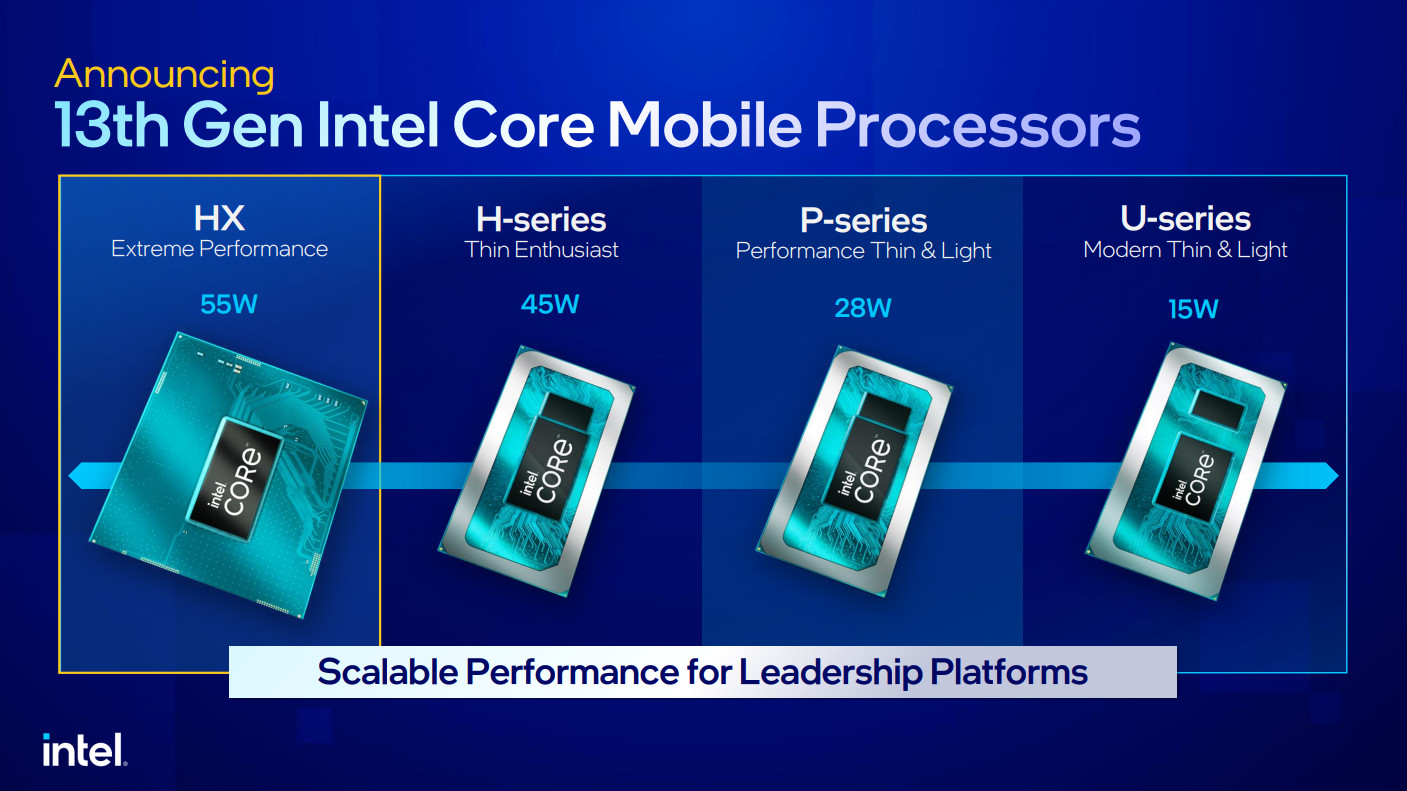What you need to know
- Intel unveils new mobile CPUs at CES 2023 in Las Vegas, including the world’s first 24-core processor for a laptop and the fastest mobile processor.
- Full specifications for all 32 processor variants have been revealed, including H, P-, and U-series.
- The HK- and HX-series chips allow overclocking, with up to 5.6GHz turbo frequency.
- The 13th Gen chips support previous-generation DDR4 and current DDR5 memory alongside PCIe 4.0 and 5.0 expansion.
Intel has announced the latest 13th Generation range of their mobile processors at CES 2023 in Las Vegas, with a new flagship Core i9-13980HX CPU, the fastest and world’s first 24-core mobile chip. All-new 13th Gen variants of Intel Core P- and U-series chips will be available alongside the powerhouse HX- and H-series, each designed for laptops in multiple categories with performance scaling from thin-and-light ultrabooks to enthusiast-level portable gaming machines.
The new range includes 32 new mobile processors overall, with across-the-board improvements to each series, with the high-performance HX-series leading the way with more cores and threads, more L2 cache for each, and support for the latest laptop I/O options. Support for the Intel Evo platform promises to set a high benchmark for processing performance alongside efficient battery life for a long-lasting mobile experience.

Proudly boasting performance breakthroughs of its flagship mobile processors, Intel’s high-end Core i9 HX-series chips offer 8x performance cores and 16x efficient cores within a slim 20mm form factor alongside the highest I/O and memory options currently available. Reserved for ultra-performance gaming and content creation laptops, these powerful CPUs will effortlessly handle intense gaming and creative tasks.
More L2 cache per core and support for up to 128GB of DDR5 RAM with 2x DIMMs per channel clocked up to 5600MHz alongside PCIe 5.0 components with Intel’s dynamic power share tech for increased efficiency means support for cutting-edge mobile hardware without sacrificing long-lasting battery life.
Extra benefits to the 13th Gen upgrade include support for Wi-Fi 6E networking and Bluetooth 5.2 connectivity, plus AI-powered enhancements such as Intel Gaussian and Neural Accelerator (GNA) improving speech recognition to offer benefits such as live translations in video conferencing. While the HX-series CPUs offer maximum performance, the slimline H-, P-, and U-series variants can power the various requirements for gaming, creative content, and multi-tasking in a portable machine.
Intel’s hybrid CPU method integrates two core microarchitectures into a single processor die, with its thread director optimizing workloads alongside the operating system to intelligently and efficiently distribute tasks. These high-end improvements go hand-in-hand with modern memory standards and PCIe devices, but the 13th Gen chips still support DDR4 RAM slots and PCIe 4.0 lanes to keep options open for OEM manufacturers.
Some options extend to the consumer, with the HK and HX-series CPUs capable of full/partial overclocking to attain even higher clock speeds if sufficient thermal control is possible. At least 60 OEM designs are planned to feature the HX chips from brands such as Razer, MSI, ASUS ROG, and more, with over 250 overall OEM designs covering the total 13th Gen range.
Support for the latest hardware and software alongside Intel Evo means any laptops designed with these 13th Gen Core mobile processors will be future-proof for portable gaming, content creation, and beyond. Expanding its Intel Xe graphics tech with enhancements carried over from Intel Arc GPUs means even the slimmest and lightweight laptops will handle intense visual tasks without compromising the performance of other components.





